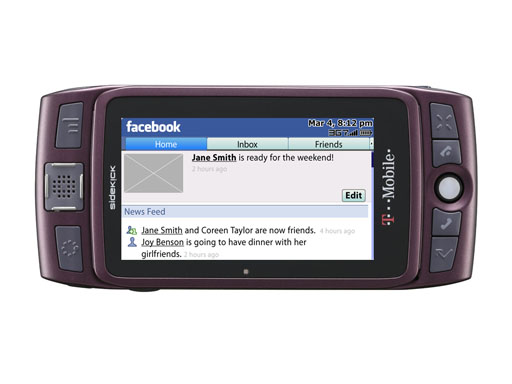New T-Mobile Sidekick LX to support Exchange ActiveSync


Key features include:
- An integrated social networking experience bringing Facebook, MySpace and Twitter directly to the customer via customized applications that update automatically and put notifications directly on the Sidekick home screen.
- GPS-enabled Live Search lets Sidekick LX customers map their current location and search for a nearby coffee shop or café, share favorite spots with friends via integration with Sidekick’s messaging capabilities, or view additional search tabs to quickly check real time traffic, gas prices or movie showtimes.
- An improved multimedia experience with a 3.2 megapixel camera and enhanced video capabilities make it easy for customers to record and upload pictures and videos to popular social networking sites. Support for audio and video streaming lets users view and listen to YouTube clips and other content online.
- The largest, brightest screen ever on a T-Mobile device. A 3.2-inch F-WVGA screen with high-definition LCD technology with 854x480 resolution
- High-speed Web browsing with support for T-Mobile’s 3G (HSDPA) network
- Future support for Microsoft Exchange: Following retail availability, T-Mobile plans to make available Exchange Active Sync support via the Sidekick Download Catalog so customers can stay virtually connected to work.
- New personalization options including the ability to record your own ringtone or receive and save them via e-mail
T-Mobile stated that 3 out of 4 Sidekick customers access social networking sites at least once per week from their Sidekick and they expect this trend will take off even more with the integrated experience on the Sidekick LX. I totally agree and as much as I see people accessing social networking sites from their phones, having these integrated applications may actually drive people to this Sidekick to use it as "social networking phone".
I am very interested in checking out that high resolution display and seeing how video content and images look on it. I have never found the Sidekick displays to be that great, but this one looks to set the bar in the mobile space.
The 3.2 megapixel camera has autofocus and a LED flash so it should take decent pics. The Sidekick LX still has the traditional swivel up display and full QWERTY keyboard from Sharp. Bluetooth 2.0 with A2DP is provided, but there is no WiFi radio. A microSD card slot is provided for storage of music, photos, and video.
The Sidekick LX is available for purchase for existing T-Mobile customers beginning today, 17 April, through a Web-only pre-sale at www.sidekick.com. The new device will be available for all on 13 May at select T-Mobile retail stores (probably those in 3G wireless zones) and online at www.t-mobile.com.